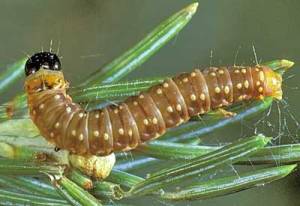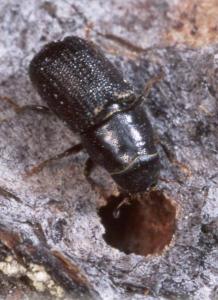6th March 2015.
Review
This seminar focused primarily on new research in to genomic factors within various species of spruce tree that have lead to an increased resistance to outbreaks of the predatory spruce budworm (Choristoneura spp.). The speaker outlined that the number of tree and plant pests are increasing year upon year in the United States of America, Canada and Great Britain with some blaming the impact of globalisation.

The major cause of this phenomenon is currently attributed to warmer winters, this causes some plant predators which usually struggle to survive in colder weather to have a much improved survival rate. This is particularly evidenced with the Mountain Pine beetle (Dendroctonus ponderosae) higher winter temperatures across areas of North America have permitted the species to survive the winter months in greater numbers than before, this has enabled them to spread across the Rocky mountains from the USA in to parts of Canada.
This is problematic as in Canada the Mountain Pine beetle and endemic species of Pine tree have not be able to co-evolve, this leads to the trees initially having rather primitive defence mechanisms in response to attack from a new predator.

Similar circumstances have lead to large increases in the numbers of Sprucebud Worm a deflorative pest. Over 85 million hectares of Spruce trees were lost in the Quebec province of Canada to the impact of the Sprucebud Worm between in 1970 and 1980, the total value of the lost spruce trees is estimated to be around $380,000,000 ($CAD).
More recently however an increase in resistance to Sprucebud worm attacks has been observed in native Spruce trees, this is demonstrated by a lower number of Sprucebud worm related tree deaths and an increase in trees recovering from attack as well as resistant trees.
Genomic analysis showed that new variants of phenolic compounds were formed in resistant trees that were not present in non-resistant trees and only present in small amounts in recovering trees. Piceol was formed in place of the usual Picein and Pingenol in place of Pingenin. Both these new compounds were discovered in larger quantities during June and July, around the time of Sprucebud worm population growth. It is believed that the formation of these compounds is driven by the pgβGlu-1 gene which was highly expressed in resistant trees leading to the coding of β-glucosidase 40. The pgβGlu-1 gene was expressed in significantly smaller quantities in non-resistant trees.
Research is still ongoing in the study and a lot of the mechanisms remain unclear and unexplained, this is partially due to the large and complex genomes of the species of trees in the study.
Opinions
I found this talk to be interesting as it really highlights the economical as well as the ecological implications regarding the successful management of pests and predators. I feel this area of research is important as it has far reaching implications around the world.
Career
I may be interested in pursuing a career in this line of research as I find a genetic and genomic approach to pest management and species conservation much more in-line with my skills and interest than other conventional methods.
